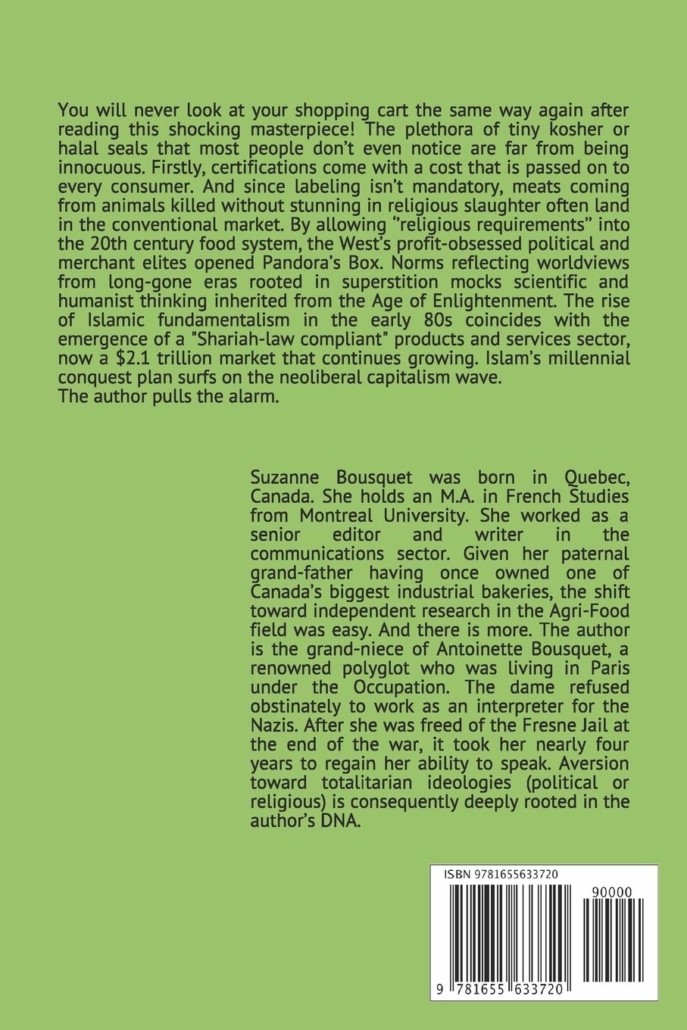The Men Who Make the Killings
The white male has become the monstrous Other in his own nation, a nation he does not recognize and that no longer recognizes him. In America, his invisible suffering finally found a voice after one mention of liberal Hollywood icon Rosie O’Donnell as a fat pig changed everything. Be-cucked and floundering, the Republican establishment looked on in horror as the enigmatic billionaire Donald Trump improbably won, with the commentariat scratching their heads as to how they could’ve missed all of the signs the much-maligned American hinterland was fed up with being the lone societal punching bag. Various “coastal elites” traversed what they regard as the backwoods backwaters of the nation ostensibly looking for answers, but mostly voyeuristically providing “decline porn” and freak show-peeping to the dinner party set back home. There was no attempt to understand who these people are, or why they are not even so much angry, though they are—furious in fact—but more betrayed and dismayed.
The critic Robin Wood argues that horror films usually elicit our interest in, and sympathy for, the monster. Usually these films become the vehicle for the monster, the Other, that is tormenting the normal members of a society. There is typically the moral hero who must stand against this creature. Robin Wood argues that in these horror films, the monster is usually the center of interest and sympathy from the audience. It is the strangeness and the complexity of the monster that elicits the interest in it rather than in the moral character, the character supposedly so like us; however, the argument that the monster is a center of sympathy from the audience is a far more complicated proposition.
Typically cast out of normal society, the monster returns to have its revenge upon those that define the social norms. For example, in John Carpenter’s Halloween, Michael Myers has been sequestered away from society for the grisly murders of his family, confined to an asylum. On the anniversary of these murders he returns home to wreak havoc. He is the Other, the social pariah, rejected by society. He has a seeming singularity of purpose, but there is more to him behind that mask. This elicits interest in the psyche of this monster: what are his motivations, his back-story, et cetera?
As Robin Wood would argue, Myers’s traumatic background should elicit sympathy from the audience. However, this is not wholly accurate. The assertion that horror films elicit interest in the monster is almost wholly true; the assertion that the monster is a source of sympathy from the audience is another issue entirely. Myers is after all a brutal murderer. And how else do we explain the alien in Alien, for example? It is a creature wholly unlike us as humans. Its motivations and back-story are very engaging, as it is so unlike us, and is a complete unknown (or was until Prometheus and Alien: Covenant). Yet the notion that it inspires sympathy from the audience is absurd. When the alien is finally destroyed, it pleases the audience. The creature seems driven to do nothing but kill, feed, and reproduce.
Perhaps there is more, but we are incapable of understanding the actual thought process of such a creature, if there is one. It is seemingly the complete embodiment of the Other. It does not look like us, it does not act like us, it does not communicate like us, and, most critically, it doesn’t think like us—at least not on the surface. The alien is a parasitic organism. It has an incubation period inside of another live organism before killing it and effectively hatching. From there it feeds and grows.
The alien is driven to thrive and survive despite what havoc it may wreak on the ecosystem around it. So is the alien really that much different from the alien spores eating away at and pillaging what was once a civilization? Physically it bears absolutely no resemblance to us, but its will to survive drives it to kill, feed, and reproduce.
Perhaps sympathy could be derived from the fact that it would not survive if it did not feed, but it’s hard to sympathize with something that has to continually destroy multiple lives, human lives in the context of the film, to subsist. And besides, how can we possibly excuse countless unnecessary killings/murders done not to survive but for sport or out of malice, even if one has had a tough lot in life such as Myers?
And what of situations where we may find ourselves subconsciously rooting for the monster as we do in Silence of the Lambs for Hannibal Lecter? Thanks to his intellect and charm, is that more a reflection of Lecter or of the audience? What does that say about us? Additionally, can we truly call what we feel for Lecter sympathy, or perhaps more of a camaraderie?
The point is this: in horror films the monster is virtually always a subject of interest due to its complexity; any resulting sympathy is usually fleeting as a consequence of the function of its existence as the projected Other more than anything else. The monster or Other serves a purpose—in its inscrutability, it is easy to project our fears and anxieties, and as it is so unlike us, it makes it easier to banish or kill. There is a terrific episode of Black Mirror that deals with this notion of “Otherizing” in war-time. As with the alien in Alien, there is perhaps more linking the monster to the audience than the audience would care to admit, depending on who is doing the seeing and their level of honesty about themselves and what they would do to survive. In any case, a feeling of sympathy is a reflection of removal from a situation. Empathy is where one projects oneself into the shoes of another, so to speak.
This is why the study of Alien and Silence of the Lambs is so interesting. The two monsters could, on the surface, not be more different. Yet they both inhabit a similar space in our cultural framework. The alien is truly not us; it is another species. Hannibal Lecter has committed one of the greatest taboos in Western society: cannibalism. Lecter may not be able to help his cannibalistic nature, but in a way he is more inhuman than the alien. There is a certain amount of ritual involved in his killings. He is so cold and calculating on the one hand that he is almost inhuman. Yet he is also the epitome of what humans once aimed for: he is cultured, he is intellectual, and he values things like art and classical music—in this respect the alien has human characteristics. Yet it is motivated by a profoundly base desire of survival. The alien forces us to consider what we would do in order to survive. It is difficult to forgive the alien for surviving when its life costs numerous human lives, members of our tribe so to speak, but the survival of humanity revolves around the consumption of other organisms. How are humans any different to the alien than cattle or chickens are to humans? Does the alien know morality? As it clearly does not, survival or no, the alien must be expelled. To embrace this alien, especially at the expense of one’s own, is to commit suicide.
Hannibal Lecter’s consumption of human flesh is a luxury, as he does not have to eat it strictly from a needs standpoint—there are plenty of other food options available. He is compelled to consume human flesh simply because psychologically he feels that he has to. What would we do if there was no other option to survive other than to consume human flesh? The aversion to cannibalism is quite pronounced in Western culture, and for good reason, but in many non-Western societies, it is still relatively commonplace. The idea of cannibalism sickens us, but it also fascinates us. The multifaceted elements of Lecter absolutely captivate us as an audience. Lecter looks like us in a way that the alien does not, but in many ways he is far more alien.
To my mind, Lecter is the embodiment of the cosmopolitan “elite” occupying positions of power and trying to play God.
Most horror films on the surface are a force of good pitted against a force of evil. Clarice Starling is a force of good—she is moral and she is a servant of the law. She upholds the law and is thus a reflection of our morals as a society. Hannibal Lecter and Buffalo Bill are the Other; their behavior is completely unacceptable according to our cultural values. We do not condone eating people or killing them and fashioning accessories out of their skin, although there seems to be a very odd and deeply disconcerting fascination in the “trans community” with Buffalo Bill.
We do condone bringing people like Buffalo Bill to justice according to our laws and confining them away from the rest of society. In fact, most would favor retributive justice, resulting in execution of the cannibal, belying the notion that liberalism is natural. Regarding the alien, whether it is cognizant of its crimes or not, this does not concern us at the basest level. What concerns us—what should concern us at any rate—is our own survival.
In the case of Silence of the Lambs we have Clarice, who despite getting help from Hannibal Lecter to catch Buffalo Bill, does not deviate from her ultimate goal of catching the killer and bringing him to justice. Despite her relationship with Lecter, when he manages to get free from prison, Clarice does not maintain the collaborative spirit. Rather, despite the long odds, she attempts to get him to reveal something about his location over the phone. She does not compromise her morals. Conversely, Lecter does not have an ideology as a man governed by base desires, yet completely in touch with the most refined aspects of high our culture while, and this is crucial, being himself an alien.
The same fascination with back-story, the unseen, and the monster extends to Silence of the Lambs. We see very little of the true horrors of Hannibal Lecter in the film, and perhaps that is why it is so easy to be seduced by his humor and charm. It isn’t until the countless other sequels that we get more than a glimpse into the depths evil that this man commits. The idea of his actions being off-screen, his past shrouded in mystery, so much of this man unseen, is a very Gothic idea. David Sexton writes:
Another bloodline passes through Stoker’s Dracula. We learn in Hannibal that, like Dracula, Lecter is a central European aristocrat. His father, too, was a count and he believes himself to be descended from a twelfth-century Tuscan named Bevisangue (blood-drinker). Like Dracula, Lecter drains his victims. After meeting him for the first time, Clarice Starling feels ‘suddenly empty, as though she had given blood’. Lecter, like Dracula, has superhuman strength; he commands the beasts; and he lives in the night. Barney, the warder, tells Clarice on her second visit that Lecter is always awake at night, ‘even when his lights are off’. Many of his physical attributes resemble those of Dracula. ‘His cultured voice has a slight metallic rasp beneath it, possibly from disuse’, we are told in The Silence of the Lambs. Dracula, says Stoker, speaks in a ‘harsh, metallic whisper’. Dracula’s eyes are red, Jonathan Harker realises when he first meets him, in the guise of a coachman. Later, when he sees Dracula with his female acolytes, he says: ‘The red light in them was lurid, as if the flames of hell-fire blazed behind them.’ So too: ‘Dr Lecter’s eyes are maroon and they reflect the light in pinpoints of red. Sometimes the points of light seem to fly like sparks to his centre.’[1]
In direct opposition to the red of Dracula and Lecter is the red of consanguinity, or shared blood, the bonds of which, indeed, are thicker than water (typically colored or referred to as blue). The red is a nation’s life-blood, a nation that obviously cannot survive without its people.
The precise point at which all of this alienism radiates outward in the modern world is with a hostile “elite” that is itself alien. Of course the “elite” is not exclusively Jewish, but it has become, by necessity as a survival mechanism, philo-Semitic. In order to understand the illness slowly killing Western civilization it is crucial to trace the symptoms back to the source, to the cause of the illness. To quote Revilo P. Oliver, “The culture of the West, like every viable civilization, is a unity in the sense that its parts are organically interdependent. Although architecture, music, literature, the mimetic arts, science, economics, and religion may seem at first glance more or less unrelated, they are all constituent parts of the cultural whole, and the disease of any one will sooner or later affect all the others.” The illness is in large part born of a unique evolutionary quirk of the White race which has mutated into a self-destructive pathology. This pathology has been encouraged and exploited by a Jewish minority for its own gain in parasitic fashion, but which is ultimately maladaptive, for it causes the death of the host. By understanding Jewish influence and domination of each constituent part of the cultural whole it becomes clear that, be it the music industry, activism in the form of “social justice” and “feminism,” alcohol, opioid-producing pharmaceutical companies, pornography, the retail industry, the movie industry, finance, or the media, the negative Jewish influence is poisoning each and every part, not just one, the over-lap and mutual reinforcement of each “facet” of this imposed and alien anti-culture only serving to hasten the illness into its terminal stages.
The anxiety over the infiltration of borders is consistent throughout history in the rise, decline, and fall of once-mighty world powers. Late Georgian and Victorian England may be considered one example among many. Hyper-aware of their status as the preeminent world power, and thus a highly desirable immigration destination, Victorians in particular became fearful of, or at the very least concerned with, alien resettlement in England, particularly from Eastern Europe (read: Jewish) but also Ireland, and a distinct discourse regarding the so-called Other in poetry and fiction as diverse as Tennyson’s “The Lotus-Eaters” and Bram Stoker’s Dracula ruminated on the changing composition of England.
Though Dracula, for example, pre-dates the post-World War II acceleration in the numbers of “guest workers” in Europe and the recent flood of “migrants” who have proven to be infinitely deleterious to the fabric of society, it spoke specifically to this anxiety of the Other, which in many ways remains prevalent in the general populace, but stands in stark contrast to the elites’ One World narrative. After all, Dracula and Lecter prove themselves to be subversive forces, as opposed to the naked onslaught of a zombie horde or a massive green alien. But for the discerning eye, Lecter and Dracula look just like us, they move among us, they converse with us and assume aristocratic qualities. For Greg Buzwell:
Dracula’s forays into London, for example, and his ability to move unnoticed through the crowded streets while carrying the potential to afflict all in his path with the stain of vampirism, play upon late-Victorian fears of untrammelled immigration. The latter was feared as leading to increased levels of crime and the rise of ghetto communities. Dracula creates several lairs in the metropolis, including one in Chicksand Street, Whitechapel—an area notorious for the Jack the Ripper murders of 1888—and one in Bermondsey, the location of Jacob’s Island—the low-life rookery immortalised by Charles Dickens in Oliver Twist. … Such fears, which Dracula mirrors very closely, ultimately lay behind the introduction of The Aliens Act of 1905, which was put in place largely to stem immigration from Eastern Europe.[2]
The course of events in Britain, from “elite” subversion to the eventual push-back—which came too late—is witnessed almost identically, but at a slight delay, in the United States.
This wave of immigration led to a growing unease in terms of concerns about the degree of (mis- or non-) assimilation of these immigrants into English society, even, in fact, their very presence. Fears of invasion and contamination were not only expressed at this time in public discourse, but also in textual examples of the period. Dracula is a foreign invader, coming to England to buy up land and take women—“Your girls that you all love are mine already.” This invader emerged from the lands where the Huns had initially settled in Europe before their excursions against Rome, and in part evokes the image of the malicious barbarian from beyond the frontier. Dracula the character also embodies the literary trope of the “Wandering Jew.” Dracula is both new and old. As Jonathan Harker writes in his journal: “It is the nineteenth century up-to-date with a vengeance. And yet, unless my senses deceive me, the old centuries had, and have powers of their own which mere ‘modernity’ cannot kill.”
The parallels with today’s situation are striking, and indeed have accelerated even further. On top of the fact that the state of Qatar owns more London real estate than the crown, consider the proliferation of mosques as nodes or alien spores of conquest throughout British cities in general, much as Dracula bought up property throughout London. Victorian fears of the rapacious Other, so lampooned as grotesque exaggeration, have come to be realized in a modern culture unwilling or unable to confront the ramifications of what this might mean. Victorian England articulated a very clear set of norms governing sexual, economic, and social behavior. Breaking them could result in severe consequences (see, for instance, the Oscar Wilde trials in the 1890s). Dracula is the physical, over-determined manifestation of the collective fears of Victorian England. At willful odds with the rigid social code, Dracula literally punctures the surface of Victorian sensibility. For Anthony Wohl: “Popular literature assigned similar characteristics to the Irish, blacks and members of the lower classes. [They] were seen as: having no religion but only superstition, [being] excessively sexual, and [originating from] unknown dark lands or territories.” The id’s drive is at the center of horror, and the prohibitive measures taken to rectify societal transgressions stem from these primal impulses. Indeed, these tensions between societal expectations and basic impulses are at the heart of civilization; the ability to restrain oneself, to delay gratification and behave with morality and purpose for something greater than oneself, is what differentiates civilization from barbarism.
Continues David Sexton, “Lecter is the face that looks back at us out of our own boredom. He is our monster, the evil we embrace for our diversion. And he feeds on us.” Lecter is in the last nothing without the spectacle. Sexton elaborates:
In Hannibal, this idea is made explicit in a manner distinctly reminiscent of the accusation embedded in ‘Au Lecteur’. Lecter attends the exhibition of Atrocious Torture Instruments, but not to look at the exhibits. He faces the other way, back at the spectators, for his thrills. ‘The essence of the worst, the true asafœtida of the human spirit, is not found in the Iron Maiden or the whetted edge; elemental ugliness is found in the faces of the crowd,’ the oracular narrative voice proclaims. … Barney warns Dr Chilton, as he says goodbye to Lecter, that his new guards don’t know how to deal with him. ‘You think they’ll treat him right? You know how he is—you have to threaten him with boredom. That’s all he’s afraid of. Slapping him around’s no good.’ But ennui is not just his fear—‘Any rational society would either kill me or give me my books’—it’s his origin. Lecter uses his own boredom as a threat to others. When he is extracting the story of the silence of the lambs from Clarice and she is not delivering what he wants, he says, ‘If you’re tired, we could talk towards the end of the week. I’m rather bored myself.’[3]
We are pleased when the alien is destroyed, and when Buffalo Bill is brought to justice, but what about the typical response to Lecter? The audience feels a certain camaraderie with him; they delight in his ability to outsmart everyone, and they are seduced by his charms. Yet what if Lecter was a real man, how would the general public regard him? The alien is an outright monster, completely inhuman. Hannibal looks like any of us, yet his crimes are arguably more heinous, more, dare I say, inhuman. In reality, a man like Lecter would delight in the media spectacle that his actions would create; the general public would at once revile him and be drawn to him. In our culture of spectacle, Lecter and the audience alike crave attention and publicity, to “survive,” and one reflects the other insofar as the current culture is constructed, or de-constructed as the case may be.
However, the reality is that the audience would not just survive but thrive without Lecter or Dracula draining them, distracting them, arresting them. Just as the alien needs organisms to survive and reproduce, Dracula and Lecter are also strictly parasites. Without the attention, Lecter exists in a vacuum: his works, his psychological ploys, go unnoticed. He would simply wither away. Similarly, Dracula must seduce, corrupt, and draw “life” from life to sustain his living death, adding to his coterie or harem if you like. As with Lucifer, he is only as strong as others are weak, and very often relies on others to do his bidding or to do the dirty work for him. It is more manipulation than real power. This recalls the modern invention of the “masculine” financier and his violence—“making a killing,” as the case may be, which originated in the 1980s with the explosion in the Jewish-driven “financialization” of the economy, which more often than not took the form of the criminal, often in name but certainly in fact. Jewish conquest of the alien other. Though less culturally-pervasive, this “legacy” remains with us today. As Leigh Claire La Barge writes:
First reporting in 1982 on a new category of businessmen, the corporate raiders, the New York Times noted that “they have even developed their own language laced with images of aggression and sexual conquest.” Soon after, periodicals quit analyzing this language and began employing it. Time’s description of venture capitalist Arthur Rock, the man who arranged the initial financing for Apple, as one of “the men who make the killings,” is one of many examples. … Ellis’s text uses financial, journalistic language to synthesize…different texts, all unified by the representation of the masculine financier and his violence.[4]
This interpretation is almost exactly correct, although the conflation of masculinity and violence through this lens does a disservice to masculinity; it is a displaced masculinity, not a true masculinity, which finds gain as the measure of a man. Such an internal conflation could only occur by a certain kind of man, in a certain set of social, political, and economic conditions, where everything must fall under the aegis of The Market’s overlords, and in this Doppelganger World, it is the anarchists and communists who carry water for global capital.
[1] Sexton, David, “Mr. Harris’s cookbooks,” August 18, 2001. Guardian Saturday Review.
[2] Buzwell, Greg, “Dracula: vampires, perversity and Victorian anxieties,” 2014. Discovering Literature: Romantics and Victorians.
[3] Sexton, David, “Mr. Harris’s cookbooks,” August 18, 2001. Guardian Saturday Review.
[4] La Barge, Leigh Clare, “The Men Who Make the Killings: American Psycho, Financial Masculinity, and 1980s Financial Print Culture,” 2010. Studies in American Fiction 37 (2).






 When you want your ferret to have a better diet than the goyim
When you want your ferret to have a better diet than the goyim






